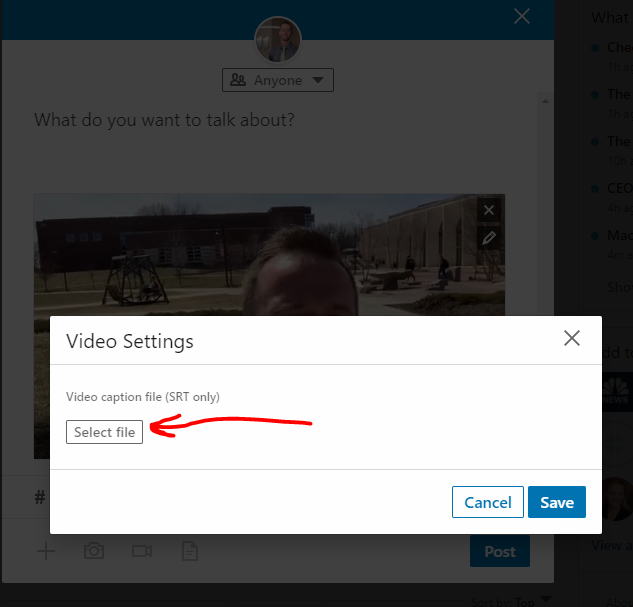There are writers, there are great writers, and then there’s John McPhee.
Having not read much about writing and the writing process ever in my life, and then reading Draft No. 4, it feels as if I endeavored to learn Spanish by plopping myself down in The Zócalo in the heart Mexico City.
It would take a lifetime to get on McPhee’s level of creative nonfiction writing, but there are five key takeaways in the book that anyone who writes anything (even emails) can extract and implement today to level up their writing.
The Significance of Draft No. 4
The first draft is the hardest. Putting words to a blank page is every writer’s plight.
If you lack confidence in setting one word after another and sense that you are stuck in a place from which you will never be set free, if you feel sure that you will never make it and were not cut out to do this, if your prose seems stillborn and you completely lack confidence, you must be a writer.
McPhee says to expect a 4:1 ratio of time between the first draft and the second, third, and fourth drafts combined. If the first draft takes a month, then you should be able to produce drafts two, three, and four within a week.
The way to do a piece of writing is three or four times over, never once. For me, the hardest part comes first, getting something – anything – out in front of me. Sometimes in a nervous frenzy I just fling words as if I were flinging mud at a wall. Blurt out, heave out, babble out something – anything – as a first draft. With that, you have achieved a sort of nucleus. Then, as you work it over and alter it, you begin to shape sentences that score higher with the ear and eye. Edit it again – top to bottom. The chances are that about now you’ll be seeing something that you are sort of eager for others to see. And all that takes time.
McPhee goes on to remark about “the interstitial time,” the downtime in between writing and editing where even though you aren’t putting pen to paper or fingers to keyboard, your brain is still at work.
What I have left out is the interstitial time. You finish that first awful blurting, and then you put the thing aside. You get in your car and drive home. On the way, your mind is still knitting at the words. You think of a better way to say something, a good phrase to correct a certain problem. Without the drafted version – if it did not exist – you obviously would not be thinking of things that would improve it. In short, you may be actually writing only two or three hours a day, but your mind… is working on it twenty-four hours a day, but only if some sort of draft or earlier version already exists. Until it exists, writing has not really begun.
The essence of writing is revision. This understanding takes a huge weight off the first draft. There’s no pressure. The first draft is not going to be good. Masters like John McPhee don’t expect it to be good. Know the bar is extremely low on a first draft. Are there words on the page? Your first draft is a success!
Revision
McPhee has encountered many expert editors throughout his career from who he has gleaned several revision processes that work.
One of these is, when reviewing an early draft, to read it top to bottom and simply circle or highlight any word that seems like it could be improved. Then revisit each of these highlighted words and work out better ones.
Use a dictionary, not a thesaurus.
You draw a box not only around any word that does not seem quite right but also around words that fulfill their assignment but seem to present an opportunity. While the word inside the box may be perfectly O.K., there is likely to be an even better word for this situation, a word right smack on the button, and why don’t you try to find such a word? If none occurs, don’t linger; keep reading and drawing boxes, and later revisit them one by one. If there’s a box around “sensitive,” because it seems pretentious in the context, try “susceptible.” Why “susceptible”? Because you looked up “sensitive” in the dictionary and it said “highly susceptible.” With dictionaries, I spend a great deal more time looking up words I know than words I have never heard of—at least ninety-nine to one. The dictionary definitions of words you are trying to replace are far more likely to help you out than a scattershot wad from a thesaurus. If you use the dictionary after the thesaurus, the thesaurus will not hurt you. So draw a box around “wad.” Webster: “The cotton or silk obtained from the Syrian swallowwort, formerly cultivated in Egypt and imported to Europe.” Oh. But read on: “A little mass, tuft, or bundle . . . a small, compact heap.” Stet that one.
Structure
Most stories have a beginning, middle, and end. But that thinking is a little restrictive. Say you’re writing a business story following the life of a high-performing B2B Sales Executive, and in the day you are shadowing the subject, nothing overly exciting happens until 4:45 P.M., when the Sales Exec finally reaches the C-level buyer at one of his biggest prospects on the phone. A meeting is set, the phone call ends, and the Sales Exec packs it in for the day. Will the reader be most engaged if you write this story chronologically, making the reader slog through 80% of the piece before they get to the best part? Perhaps a different structure, one that’s not a straight line, would be best? Maybe you line up an interview with the C-level buyer, and get their perspective from that fateful day. Then you could have parallel stories from each subject’s point of view, ultimately arriving at the moment of truth – the phone call. Now we’ve got something worth reading!
One of McPhee’s examples about how he used structure to tell the best story involved a bear. Malcolm Harris from The New Republic sums it up well.
Inspired by the preponderance of natural cycles in the Arctic, McPhee shapes a story about Alaska around a circle. The first half of the arc will take place linearly, progressing from the beginning in the straightforward humanly experienced direction of time. Halfway through, the narrative flashes back to an earlier point, which we follow to the end, which is also the beginning. McPhee’s concern is less a desire to ape the movement of the moon, and more that the trip’s most dramatic event (a grizzly bear encounter) occurs earlier than it would ideally, which is “about three-fifths of the way along, a natural place for a high moment in any dramatic structure.” McPhee makes even the limited power of narrative sound awesome: “You’re a nonfiction writer. You can’t move that bear around like a king’s pawn or a queen’s bishop. But you can, to an important and effective extent, arrange a structure that is completely faithful to fact.” You can’t move bears, but you can move time, and that’s just as good.
It Takes As Long As It Takes
Giving yourself deadlines for a good piece of writing has adverse affects on the quality of the writing. This is especially important if the piece requires research, interviews, and observations out in the world.
Say you’re writing a piece about successful Chief Marketing Officers and the daily habits they attribute their success to. You seek out to collect data, making phone calls and lining up interviews with your dream list of subject matter experts. Having read enough similar books and essays, you know you will need at least five CMO’s thoughts to have enough substance for the piece. After many hours of phone calls and attempts, you’ve only been able to interview two people. You told yourself you wanted to get this project done in two weeks, and now one week has already come and gone. Do you press on with just the two sources and hope it will be enough? One path – change the deadline. It takes as long as it takes. Don’t change your vision and plan because of a deadline.
Keep an Open Mind to the True Story
Continuing the above example, perhaps one of your two interviewees was particularly colorful, open, illuminating. The interview was supposed to be thirty minutes; it went for two and a half hours. Perhaps she was ultra dialed in to her daily regimen with a laser focus on how each minute of her days are spent. Perhaps, then, the best path forward is to alter the plan for the piece entirely, and write a personal profile on this one CMO.
The story is what the story is. Your job as the writer is to have eyes open enough to see it.
What’s your biggest takeaway from John McPhee’s “Draft No. 4”? What other sources of writing inspiration and knowledge have you found particularly useful? Let me know in the Comments!








